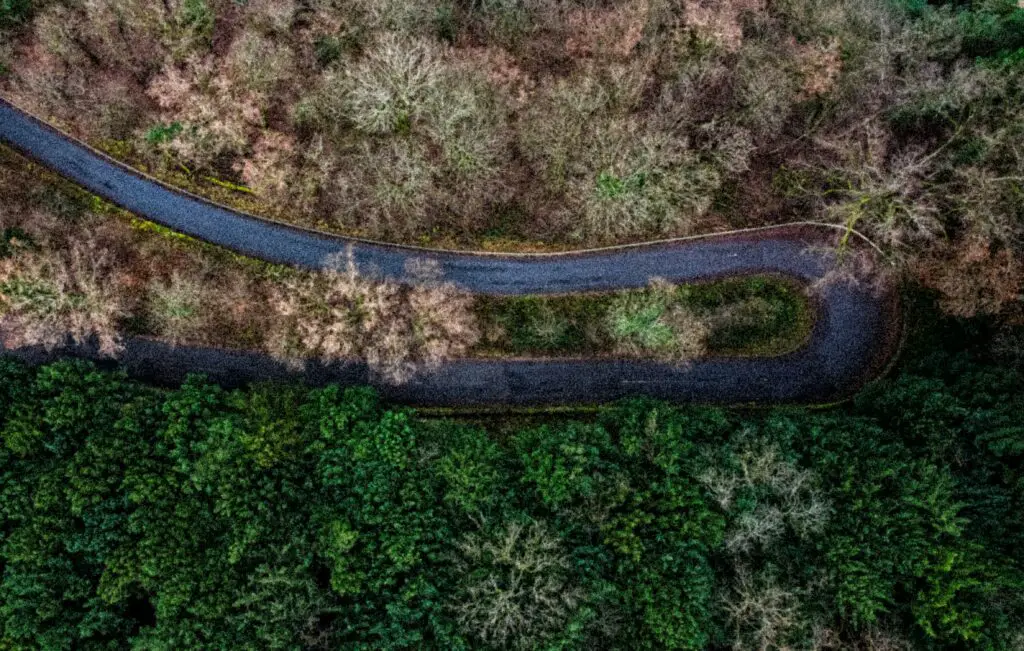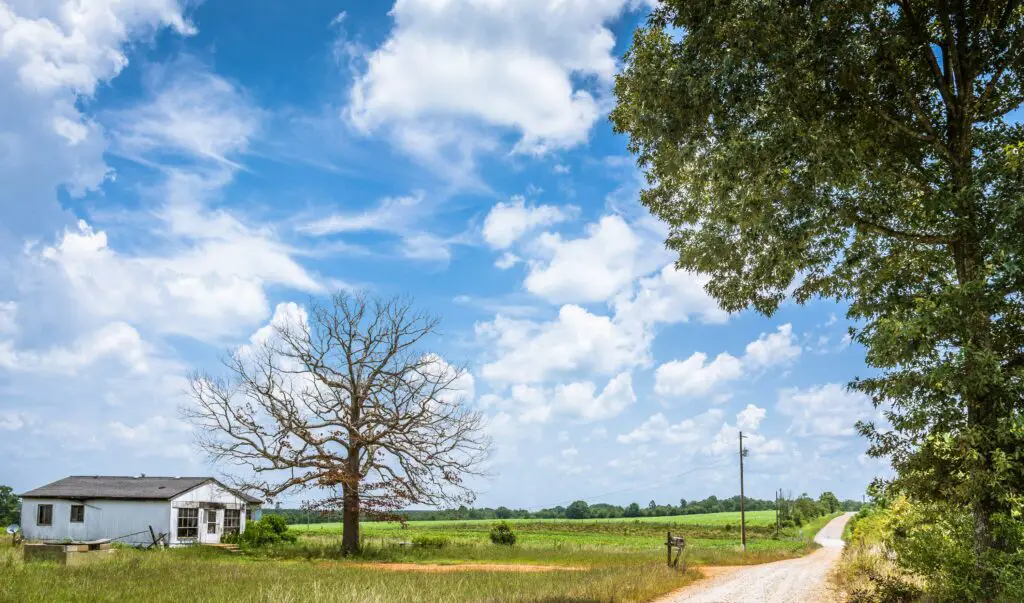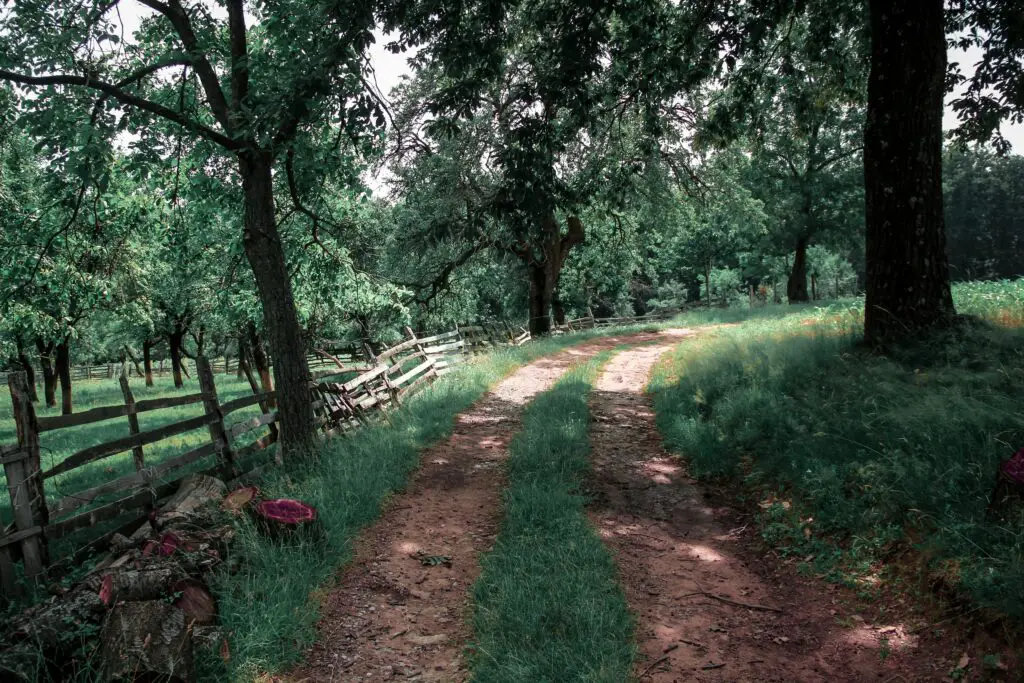When we learn to drive, many of us memorize numerous rules regarding all types of roads we will encounter in our lives. These rules are laid out to prevent accidents, injuries, and death. Some road rules are simple to understand, while others are less conspicuous or less discussed in driving school. For example, we commonly learn how to drive on highways and city streets but not rural roads. Although there is less traffic in these areas, the undeveloped and often unspoken rules of areas like rural one-way roads can usually lead to confusion for drivers.
Unique Rural Road Situation
This video from the U.K. shows a great example of how small one-way roads can cause a pileup of confused drivers.
One person is filming the video from the dashboard of their car. As they pull up to a small one-lane bridge, they come across another car trying to go in the opposite direction. The two people get out of their vehicles and start arguing about who should reverse to let the other through. The man filming pans back to show that two other cars have pulled up behind him, making it difficult for him to reverse.
Nonetheless, the woman continues to argue with the driver, telling him to get the line of cars to reverse. After some more arguing, the woman finally agrees to reverse her car to let the line of vehicles move past. The woman aggressively backs out, clearly upset at her loss in the argument.
Who Has The Right of Way?
Although this situation took place in the U.K., we can apply U.S. law to understand some really important rules that apply.
When two cars drive in opposite directions on a small one-way road, most agree that basic intersection rules apply. The driver who arrived at the situation first technically has the right of way. Thus, the woman in the video had the right of way.
Many agree that resolving conflicts like this should also involve applying the facts of the situation. In the video, the man filming faced a line of cars behind him, which made backing up nearly impossible. Therefore, asking the woman to reverse made the most logical sense, even though it technically violated right-of-way rules.
One-Way Roads: Why Do We Have Them?

One-way roads only allow traffic in a single direction. They range from highly developed multi-lane roads to small rural paths. Many rural roads are classified as one-way because they are too narrow for two cars to pass simultaneously. However, many of these roads technically accommodate traffic in both directions.
High-traffic urban areas often use one-way roads to facilitate smooth traffic flow in a single direction. This allows for improved signaling and more predictability for pedestrians. Having traffic flow only in one direction allows drivers to avoid causing opposing lane collisions.
Clear signage often helps drivers navigate one-way roads. Some roads display distinct “one-way road” signs, while others use “do not enter” signs to warn opposing traffic. When signs are absent, drivers can identify one-way roads by white lane markings or by observing cars parked in the same direction on both sides.
Along with the protection and clarity they add to big cities, small one-lane roads in rural areas can bring their complexities. Rural one-way roads lack signage and clear rules, leaving drivers to resolve run-ins independently.
What’s So Bad About Rural One-Way Roads?
In the city, rules regarding one-way roads are often simple and defined. Signage prevents people from entering the wrong way, and drivers can be less stressed when turning across lanes. Likewise, many roads have lights or other protected ways to turn, aiding their level of safety.
On the other hand, cars face a higher risk of collisions in rural areas. Many rural roads designated as one-way still allow traffic in both directions because they are too narrow for bi-directional flow. With a lack of signage and clear direction, nothing prevents two drivers from accidentally opposing each other on a rural one-way road. As a result, single-lane roads can often be dangerous, leading to more accidents than safer city streets.
Who Has The Right of Way On Rural One-Way Roads?

Across most jurisdictions, there aren’t specific laws governing small one-lane rural roads. Most people have accepted a few colloquial rules to help them out. Two extremely common rules are:
- On roads with a slope, the car going uphill has the right of way. Many uphill areas (such as mountain roads) have a rugged slope to drive on. Cars going uphill are often given the right of way since reversing is much more of a challenge for them.
- On rural one-way roads, the car that arrives first has the right of way. Much like the rules of an average intersection, vehicles that arrive first are given priority.
General rules like this tend to help drivers in most situations. As shown in the video above, some situations can involve multiple cars and require more communication and care. On top of these accepted rules, many drivers use common sense when resolving a small one-way road run-in. For example, one car may have an easier time yielding even if they have the right of way. Thus, many drivers understand that bending the rules is alright from time to time as long as it helps everyone get to their destinations safe and sound.

